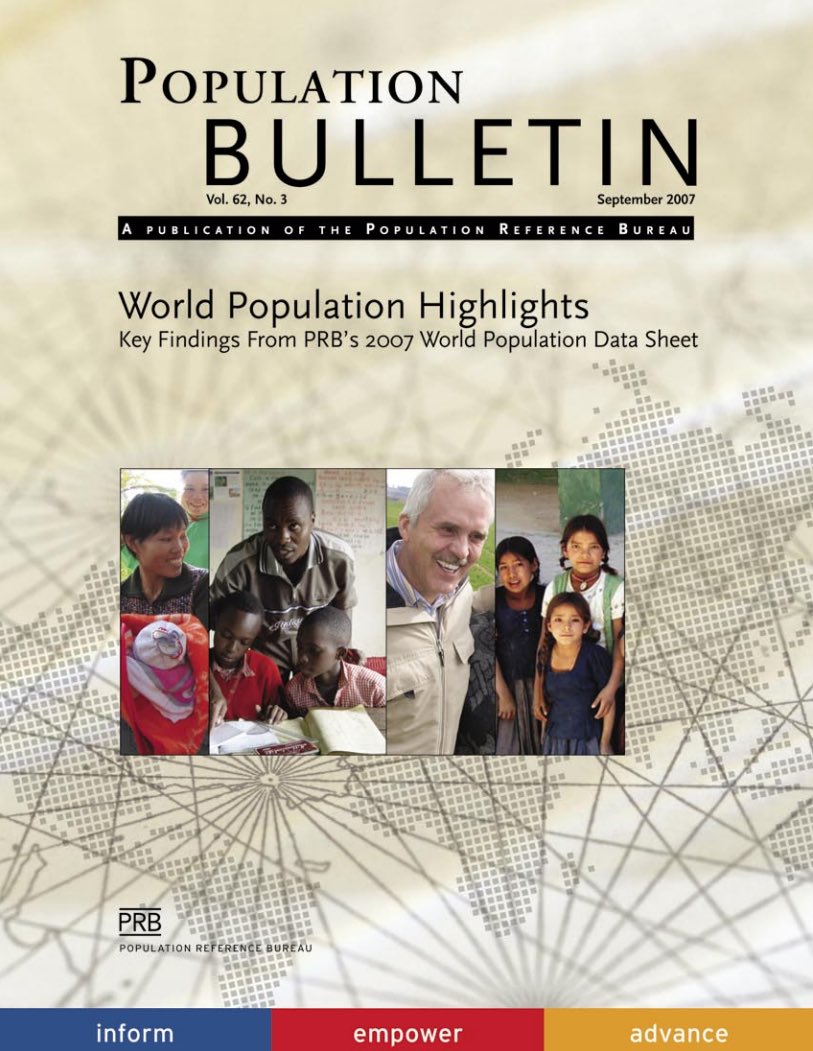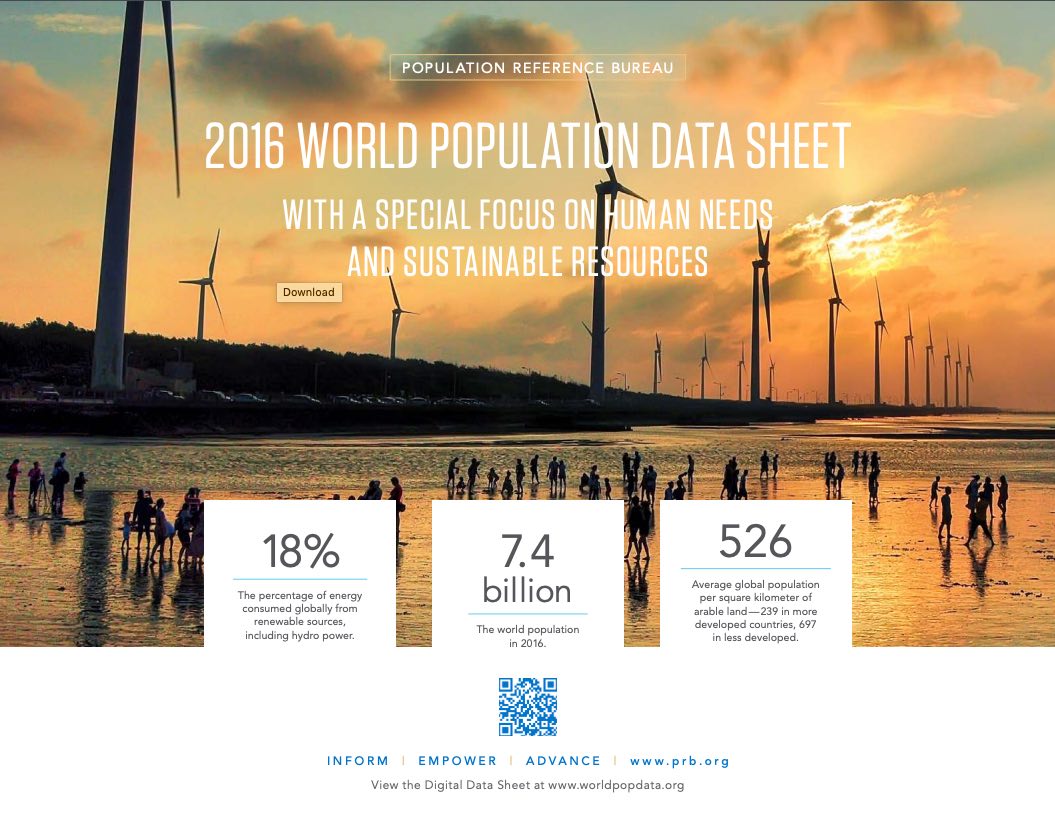Population Bulletin, vol. 62, no. 3: World Population Highlights 2007–Migration
2007) In 2005, about 191 million people—3 percent of the world's population—were international migrants, according to UN estimates.

2007) In 2005, about 191 million people—3 percent of the world's population—were international migrants, according to UN estimates.
(2010) Women of childbearing age in El Salvador are having fewer children and using more family planning, with a recent increase in the use of injectable contraceptives.

“Girls, women, families, society, and the economy all pay a price for the gaps in knowledge about women’s health,” a new report says.

Project: PACE: Policy, Advocacy, and Communication Enhanced for Population and Reproductive Health
The world population will reach 9.9 billion in 2050, up 33 percent from an estimated 7.4 billion now, according to projections included in the 2016 World Population Data Sheet from the Population Reference Bureau (PRB).
(2012) Working mothers with a bachelor's degree have gained increasing access to paid leave in recent decades, while women without high school degrees have seen no change, reported Nancy Folbre, a University of Massachusetts economist.

The Census Bureau’s state-level population estimates for 2018 provide a window into the potential redistribution of seats in the U.S. House of Representatives when the 2020 Census numbers are released.
Project: Combatting Noncommunicable Disease Risk Factors in Youth
Asia has an opportunity to curb a rising noncommunicable disease (NCD) epidemic by addressing NCD risk factors among young people, according to a new set of PRB publications.
(2010) More than 1.4 billion people around the world live in extreme poverty (defined as income of less than US$1.25 per day), and nearly 2 billion more live just above that level.